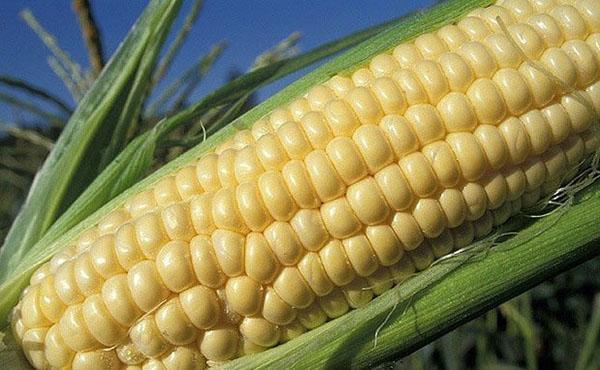Ripeness stages of corn
 Corn contains a lot of nutrients. It contains more than 50 vitamins and minerals. The most valuable of these is biotin. This substance is involved in the synthesis of antioxidants that block the action of free radicals and slow down the aging process.
Corn contains a lot of nutrients. It contains more than 50 vitamins and minerals. The most valuable of these is biotin. This substance is involved in the synthesis of antioxidants that block the action of free radicals and slow down the aging process.
Composition of corn grains
The largest amount of biotin is found in corn juice, so harvesting should be done at the stage of milky-wax ripeness of the ears. Milk corn also contains:
- B vitamins;
- macro and microelements;
- amino acids;
- carotene.
The content of these substances decreases as the corn cobs ripen. Ripe grains contain more fiber, iron, magnesium, potassium and zinc, which strengthen human immunity and participate in the formation of bone tissue.
Ripe corn kernels are 40% protein, while milk corn is 70% protein. Ripe corn is poorly digested because it contains a large amount of indigestible fiber.
Ripe corn should not be eaten by people who suffer from diseases of the gastrointestinal tract and kidneys. Dairy corn, on the other hand, has a positive effect on the intestines.
How to determine the ripeness of corn
Corn is harvested in early August, when the corn silk turns brown. To determine the stage of ripeness of the corncob, peel back one of the corncobs slightly.
If the stigmas inside the leaf are still green, but outside they have already acquired a brown color - corn is at the stage of milky-wax ripeness. During this period, it contains the largest amount of nutrients.
Pressing lightly on a grain of milk corn will pour out sweet white juice. This corn can be eaten both boiled and fresh.
Application of corn
In America, cobs of milk corn are added to feed for turkeys. Due to the high protein and potassium content of the cob, the bird gains muscle mass very quickly.
The corn can be left to ripen until the stigmas under the leaves are dry. Ripe corn kernels are perfect for meat as a side dish, they can be used for preservation for the winter.
From the stigmas of ripe corn, infusions and decoctions can be prepared, which are used in folk medicine in the treatment of diseases of the gastrointestinal tract, gall bladder and liver.